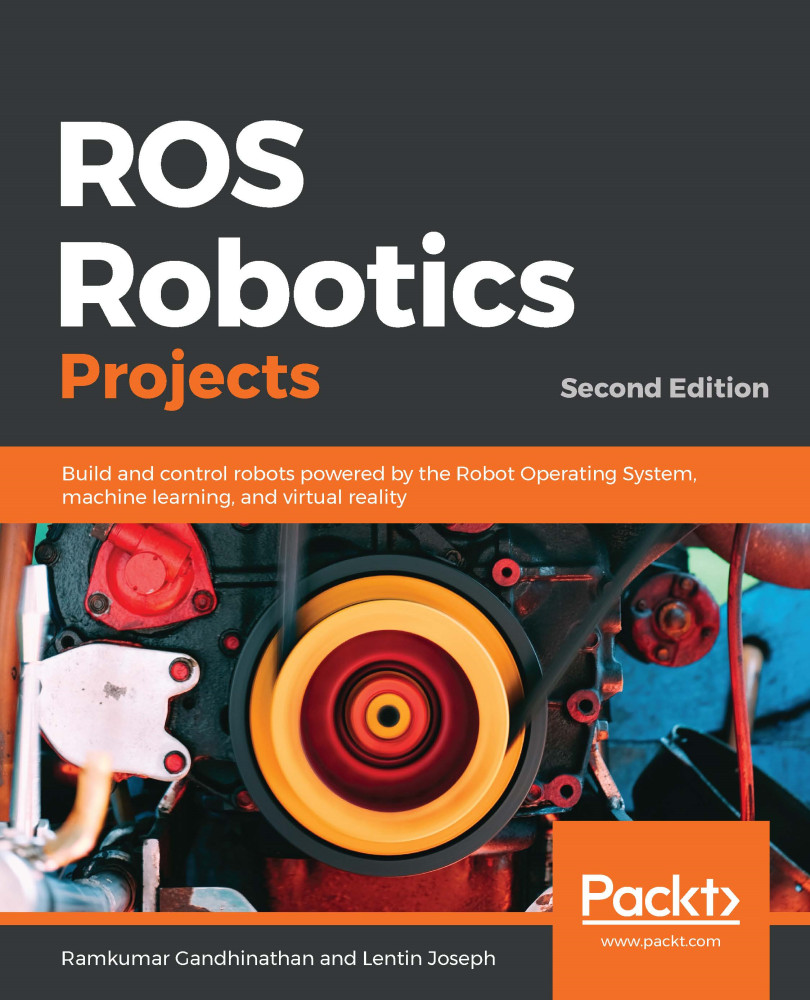Now, everything is set for the final demonstration. We have a robot base that can move autonomously in the environment and the arm can move to any location that we define it to go to. So, to run our application, we need to perform the following steps:
- Map and save the environment.
- Choose the points on the environment.
- Add the points to our library.
- Define the respective states.
- Complete the state machine.
Let's look at these steps in detail.

































































